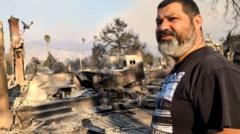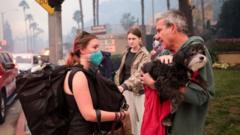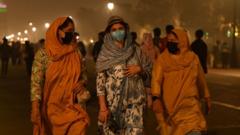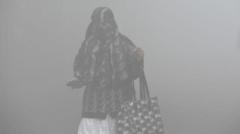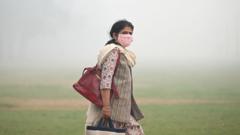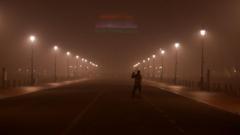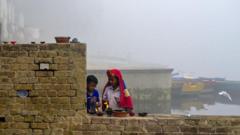Residents of Altadena confront lasting hazards from wildfire smoke and debris as they return home.
L.A. Wildfires: Toxic Aftermath Haunts Survivors

L.A. Wildfires: Toxic Aftermath Haunts Survivors
After the flames, the ash lingers, posing unseen health dangers to those who survived the blazes.
Even Homes That Evade the Fire Face Toxic Ash Risk, Studies Show
Health hazards from soot and smoke blown indoors onto furniture and walls can linger for months: “Wind will get through every crack.”
By Hiroko Tabuchi
Jan. 15, 2025, 5:58 p.m. ET
Armed with garden hoses connected to a feeble water supply, Matthew Craig fought valiantly against flames as they crashed down on Altadena, a once-green neighborhood of Los Angeles County. "The heat felt like a dragon's breath," he recounted, recalling the choking plume of smoke that engulfed them. His home, though currently intact, is now cloaked in a thin layer of ash, dirt, and soot thanks to the impending winds that infiltrated every corner of the structure. "Living in what feels like a toxic wasteland is not something my family and I will accept," he stated, alongside his wife, child, and dog.
As residents progressively re-enter places marred by fires, they are met with invisible yet hazardous remnants of smoke and ash, which experts warn may lead to significant health issues, particularly respiratory complications. Fires incinerate various materials, from cars to plastics and lead pipes, which release noxious smoke and fumes capable of flourishing in living environments for months. Recent findings indicate that even homes that have avoided the catastrophic destruction are not immune, as lung-choking particulates can pervade furnishings such as carpets, sofas, and walls.
Colleen Reid, a leading researcher on air pollution impacts from the University of Colorado Boulder, illuminated the gravity of the situation. "There are countless individuals who have faced unimaginable losses, and that's undeniably tragic," she expressed. "But even those who feel fortunate to have maintained their homes could be unknowingly confronting exposure to hazardous substances." As she poignantly noted, "The wind will infiltrate every crack."
Health hazards from soot and smoke blown indoors onto furniture and walls can linger for months: “Wind will get through every crack.”
By Hiroko Tabuchi
Jan. 15, 2025, 5:58 p.m. ET
Armed with garden hoses connected to a feeble water supply, Matthew Craig fought valiantly against flames as they crashed down on Altadena, a once-green neighborhood of Los Angeles County. "The heat felt like a dragon's breath," he recounted, recalling the choking plume of smoke that engulfed them. His home, though currently intact, is now cloaked in a thin layer of ash, dirt, and soot thanks to the impending winds that infiltrated every corner of the structure. "Living in what feels like a toxic wasteland is not something my family and I will accept," he stated, alongside his wife, child, and dog.
As residents progressively re-enter places marred by fires, they are met with invisible yet hazardous remnants of smoke and ash, which experts warn may lead to significant health issues, particularly respiratory complications. Fires incinerate various materials, from cars to plastics and lead pipes, which release noxious smoke and fumes capable of flourishing in living environments for months. Recent findings indicate that even homes that have avoided the catastrophic destruction are not immune, as lung-choking particulates can pervade furnishings such as carpets, sofas, and walls.
Colleen Reid, a leading researcher on air pollution impacts from the University of Colorado Boulder, illuminated the gravity of the situation. "There are countless individuals who have faced unimaginable losses, and that's undeniably tragic," she expressed. "But even those who feel fortunate to have maintained their homes could be unknowingly confronting exposure to hazardous substances." As she poignantly noted, "The wind will infiltrate every crack."



